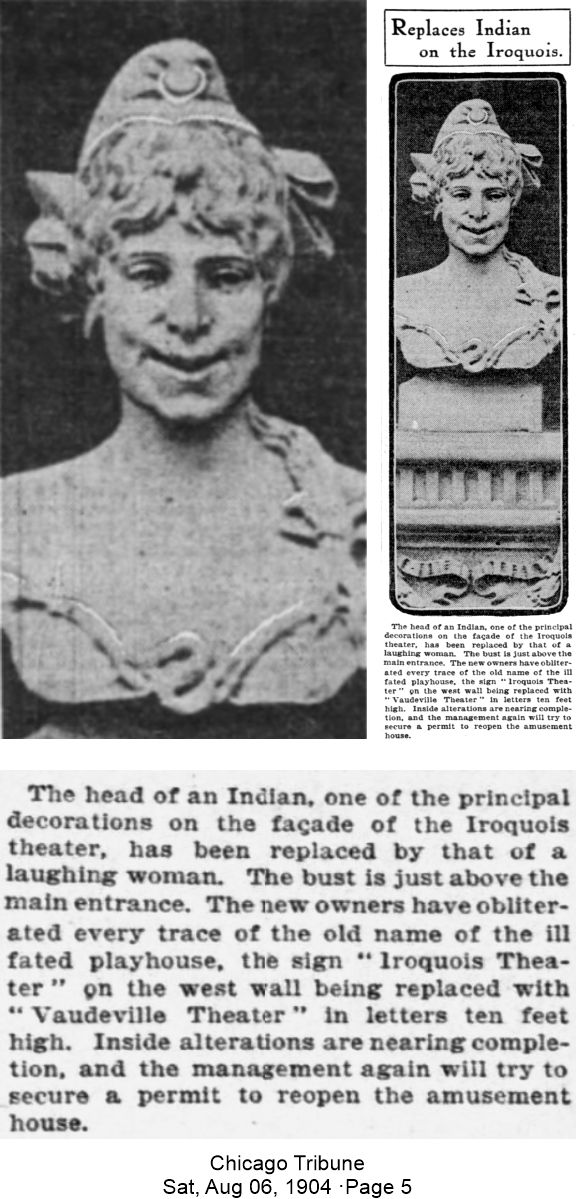|
The 3' x 4' bust of an Iroquois Indian chief (above) that graced
the front of the Iroquois Theater was produced by an
architectural sculpturing firm in Chicago, Beil and
Mauch, who contracted with Chicago sculptor Joseph
Dux (pronounced "dukes") for the stone carving. Dux
carvings appeared in numerous architectural projects
in the Midwest, including the Fort Wayne Allen
County Courthouse, Madison Wisconsin Historical
Society Library, Chicago Athletic Club, Chicago
LaSalle Hotel, University of Illinois Stadium, Ogden
Armour, and Edith Rockefeller McCormick homes.
A Philadelphia native, Joseph Dux (1856–1931) was
married to Mathilda Blanche Best Dux. The pair had
four children, one of whom, Arlene, married Dr.
Charles Reign Scoville, a prominent Evangelist
minister.
|

|
|
In August 1904, seven months after the Iroquois
fire, the new owners of the theater replaced the
bust on the front of the theater with what was
called a "laughing woman." The Iroquois name was
covered over with a large "Vaudeville Theater" sign.
In 1909 a human being promoting George M. Cohan's Yankee
Prince was in her place. It isn't known when she was removed
from her platform or if she was returned after 1909.
|
